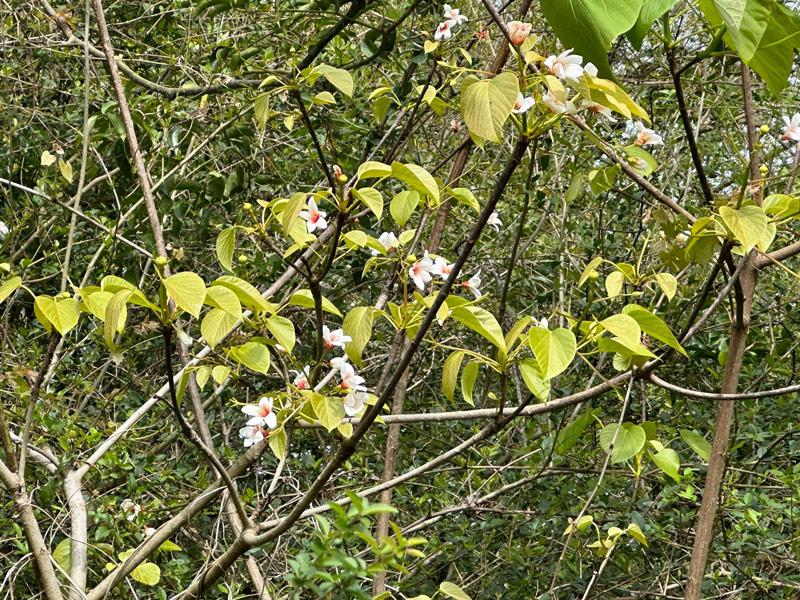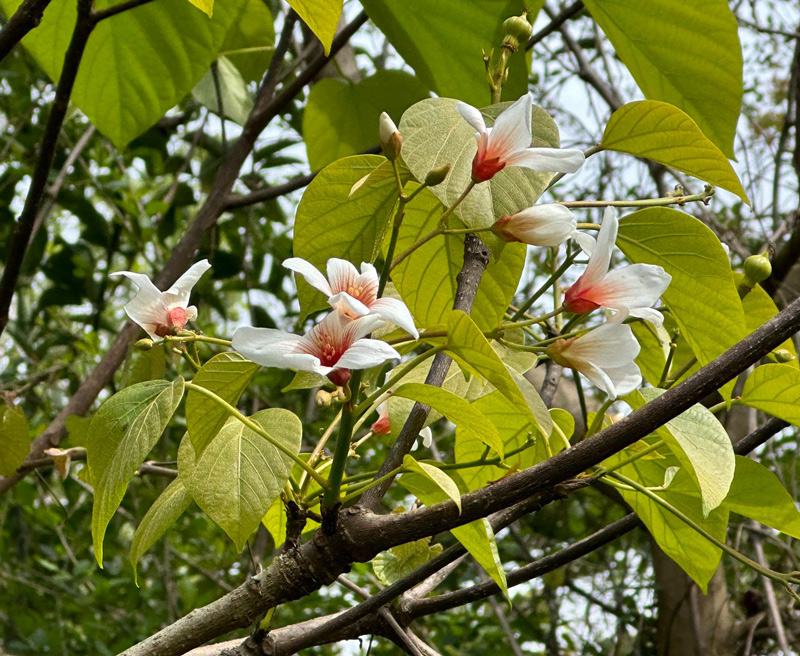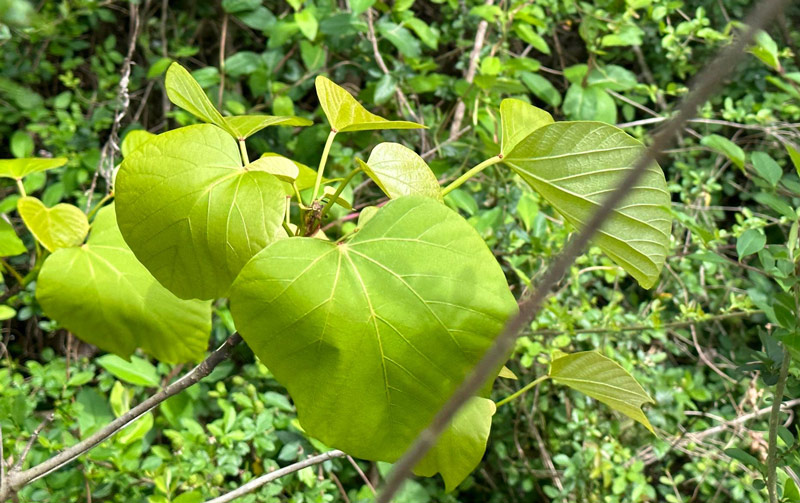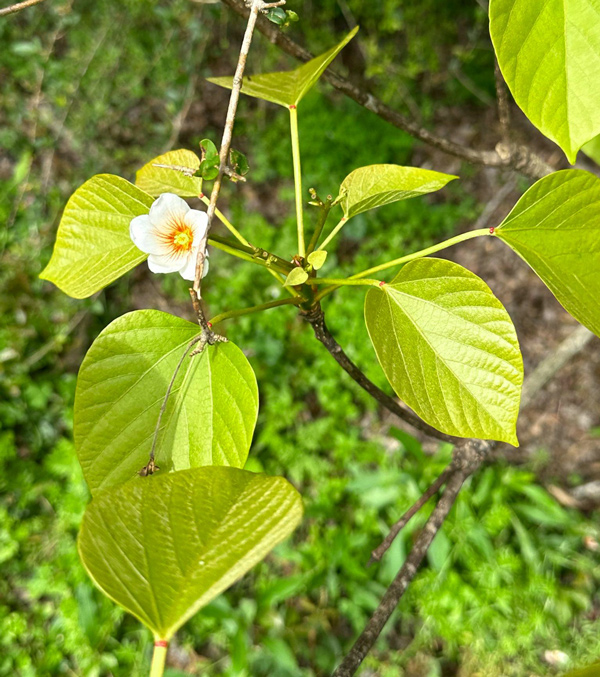We were driving home from church on Sunday when I spotted some white flowers on a tree a little ways down a hill from the roadside. At first, I thought they may have been pawpaws hiding in the brush, so I did a U-turn and parked the van, then hiked across the road and down the hillside.
As I got a little closer, I realized the leaf and trunk shapes were all wrong for pawpaw.
Instead, I had discovered an old friend.
Tung oil trees!
Back in my North Florida food forest, in the halcyon year of 2012, I planted a tung tree to memorialize my Grandpa Jud, who was a talented woodworker. He used tung oil to finish some of his projects. When I found a tree for sale at a nursery and discovered the species also bore beautiful flowers, I bought it and put it in the food forest.
Here’s the farewell tour:
I greatly miss that old food forest sometimes. It was a beautiful project.
But back to the tung trees.
Here’s a close-up of the blooms:

And the foliage:
And a single bloom.
They’re just leafing out at this time of year, and the leaf color is a weird lime-green.
I’m going to see if I can find a few trees for my food forest here. Not because they’re particularly useful or edible – they aren’t edible! – but because they remind me of Florida and my past food forest project, as well as Grandpa.
I don’t want to move ever again.


3 comments
Wonderful.
LOVE them as well! Pretty certain you’re in the know, but for those who might see this who aren’t, tung trees were a key crop that temporarily helped fill the agricultural void left across the coastal south by the demise of cotton. I’m blessed to have tung trees on my land that are descendants of trees that were part of 12,000 acres of tung trees growing in Jefferson County, FL in the mid-1900s. Funny story on the wood finish note, shortly after moving to North Florida in 2002, I put down a hardwood floor in my home and after much research choose Waterlox Tung Oil Sealant as my finish of choice. A decade later I moved to my current homestead, spotted gorgeous tropical-looking flowers, worked to ID them, and was shocked to learn how they’d been such an important local crop at one time. Interesting footnote — already facing challenges from petroleum products and a number of late spring freezes, Hurricane Camille in ’69 played a pivotal part in dealing a fatal blow to southern tung oil production, badly damaging groves throughout Louisiana, Mississippi, and Alabama.
Yes indeed. It’s amazing how many industries came and went over the years. Turpentine was another one that used to create millionaires.
Comments are closed.